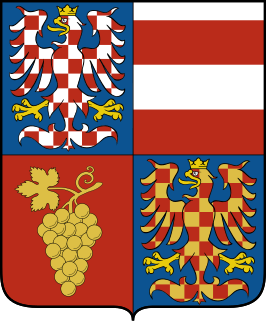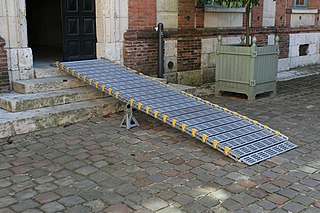
Zweigelt is a red wine grape variety developed in 1922, at the Federal Institute for Viticulture and Pomology at Klosterneuburg, Austria, by Fritz Zweigelt. It was a crossing of St. Laurent and Blaufränkisch. It is now the most widely grown red grape variety in Austria, as well as having some presence in Canada's vineyards. In 2008, Austrian plantations stood at 6,512 hectares, and have expanded in the 2000s as a part of general red wine trend in Austria.

Blaufränkisch is a dark-skinned variety of grape used for red wine. Blaufränkisch, which is a late-ripening variety, produces red wines which are typically rich in tannin and may exhibit a pronounced spicy character.

The German wine classification system puts a strong emphasis on standardization and factual completeness, and was first implemented per the German Wine Law of 1971. Almost all of Germany's vineyards are delineated and registered as one of approximately 2,600 Einzellagen, and the produce from one can be used to make German wine at any quality level, depending not on yields but on the ripeness, or must weight of the grapes.

Kabinett, or sometimes Kabinettwein, is a German language wine term for a wine which is made from fully ripened grapes of the main harvest, typically picked in September, and are usually made in a light style. In the German wine classification system, Kabinett is the lowest level of Prädikatswein, lower in ripeness than Spätlese.

In railway signalling, an interlocking is an arrangement of signal apparatus that prevents conflicting movements through an arrangement of tracks such as junctions or crossings. The signalling appliances and tracks are sometimes collectively referred to as an interlocking plant. An interlocking is designed so that it is impossible to display a signal to proceed unless the route to be used is proven safe.
In sociolinguistics, a register is a variety of language used for a particular purpose or in a particular communicative situation. For example, when speaking officially or in a public setting, an English speaker may be more likely to follow prescriptive norms for formal usage than in a casual setting; examples might include pronouncing words ending in -ing with a velar nasal instead of an alveolar nasal, choosing words that are considered more "formal", and refraining from using words considered nonstandard, such as ain't.
Various terms are used for passenger rail lines and equipment-the usage of these terms differs substantially between areas:

Old vine, a common description on wine labels, indicates that a wine is the product of grape vines that are notably old. There is a general belief that older vines, when properly handled, will give a better wine. There is no legal or generally agreed definition for old.
HOn30 gauge is the modelling of narrow-gauge railways in HO on N gauge track in 1:87 scale ratio.

New Zealand wine is produced in several mostly maritime, cool climate winegrowing regions of New Zealand, an island country in the South Pacific Ocean. Like many other New World wines, it is usually produced and labelled as single varietal wines, or if blended the varietal components are listed on the label. New Zealand is famous for its Marlborough Sauvignon Blanc, and more recently its dense, concentrated Pinot Noir from Marlborough, Martinborough and Central Otago.
The glossary of wine terms lists the definitions of many general terms used within the wine industry. For terms specific to viticulture, winemaking, grape varieties, and wine tasting, see the topic specific list in the "See also" section below.

Wine in the Czech Republic is produced mainly in southern Moravia, although a few vineyards are located in Bohemia. However, Moravia accounts for around 96% of the country's vineyards, which is why Czech wine is more often referred to as Moravian wine. Production centers on local grape varieties, but there has been an increase in the production of established international strains such as Cabernet Sauvignon.

The United Kingdom is a major consumer but only a very minor producer of wine, with English and Welsh wine sales combined accounting for just 1% of the domestic market.
Gros Verdot is a red French wine grape variety that was a historically important grape in the Gironde wine region of Bordeaux but plantings of the variety have been banned in the region since 1946 with the grape no longer being a permitted variety in any AOC Bordeaux wines.

Cru is "a vineyard or group of vineyards, especially one of recognized quality". It is a French wine term which is traditionally translated as "growth", as it was originally the past participle of the verb "croître". As a wine term it is closely connected to terroir in the sense of an "extent of terrain having a certain physical homogeneity. .. considered from the point of view of the nature of the soil as communicating a particular character to its produce, notably to wine". It may thus be defined as: "Terroir as a place of production" or an "Ensemble of terrains considered from the point of view of what grows there, from a particular cultivation." More specifically, cru is often used to indicate a specifically named and legally defined vineyard or ensemble of vineyards and the vines "which grow on [such] a reputed terroir; by extension of good quality." The term is also used to refer to the wine produced from such vines. The term cru is often used within classifications of French wine. By implication, a wine that displays the name of its cru on its wine label is supposed to exhibit the typical characteristics of this cru. The terms Premier Cru, Grand Cru, etc., are generally translated into English as First Growth, Great Growth, etc.; they designate levels of presumed quality that are variously defined in different wine regions.

Schloss Vollrads is a castle and a wine estate in the Rheingau wine-growing region in Germany, that has been making wine for over 800 years.
This glossary of viticultural terms list some of terms and definitions involved in growing grapes for use in winemaking.

Mikulovská is one of four Czech wine regions within southern Moravia, Czech Republic. The Mikulovská wine region, containing 30 wine villages, is famed for producing white wines grown in the limestone soils, particularly in and around the area of the Pálava Landscape Protected Area. Historically a centre of viticulture and winemaking in Moravia, Mikulovská is home to the historical town of Mikulov, and the Czech National Wine Centre and Wine Salon of the Czech Republic, located at Valtice Castle.

Junker is a noble honorific, derived from Middle High German Juncherre, meaning "young nobleman" or otherwise "young lord". The term is traditionally used throughout the German-speaking, Dutch-speaking and Scandinavian-speaking parts of Europe. It also was used in the Russian Empire due to Baltic German influence, up until the Russian Revolution.

Palatschinke or palacsinta or clătită is a thin crêpe-like variety of pancake of Romanian origin, common in Central and Eastern Europe. The name originates from the (Romanian) plăcintă (clătită), referring to the runny dough used for the recipe.



















